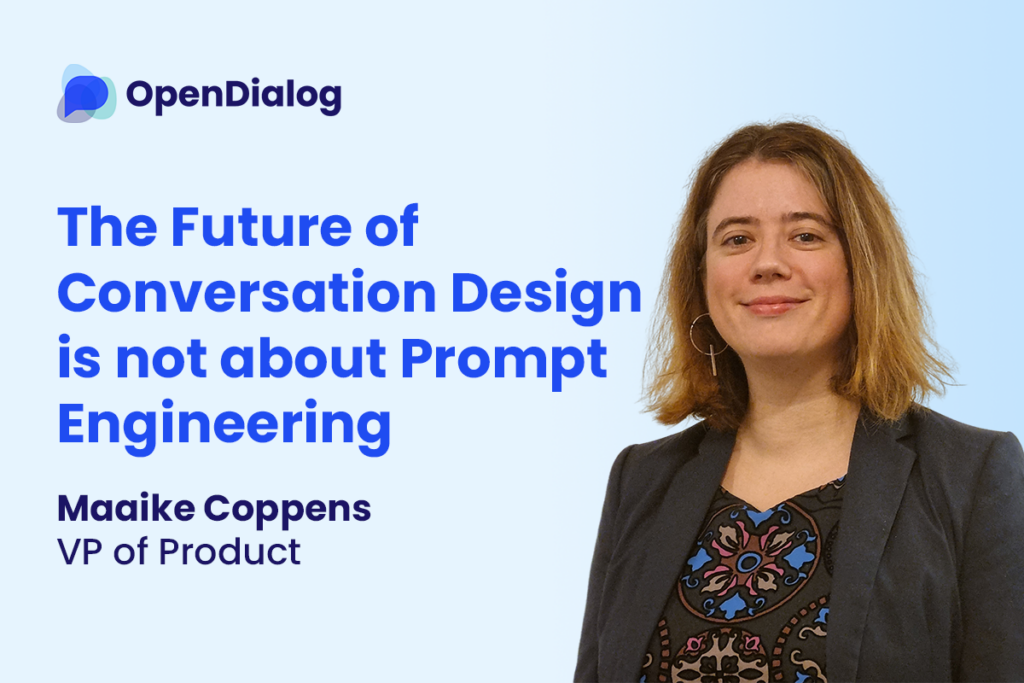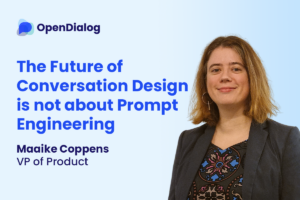The conversation design community recently gathered in London at the much anticipated Unparsed conference to share their experiences and advice on how to build effective and ethical conversational agents. The conference was a fantastic gathering of minds, sharing insights and visions for the future of conversation design – a true dream for those of us passionate about this field.
However, it was notable from the outset how many of the conversations revolved around prompt engineering. It felt somewhat disruptive therefore when I took to the stage to deliver my presentation titled: Future-Proofing Our CxD Practice – And Why it’s Not About Prompt Engineering.
While I had considered exploring case studies or diving into technical intricacies like ontologies and design systems in my talk, I realized that focusing on our profession’s long-term success was paramount.
At OpenDialog, we conducted a hackathon to explore the potential of large language models in our products. This journey through prompt engineering was both exciting and challenging, with debates over the best approaches. Our experiences underscored the evolving nature of technology and the importance of adapting step by step.
Our experimentation led to the incorporation of new language capabilities into our platform. This work, while enlightening, highlighted the risk of losing sight of the bigger picture amid the details. We mustn’t be caught in the trap of obsessing over prompt engineering and forget the essence of our role: creating meaningful connections between organizations and their users.
Prompt engineering, though essential, revolves around the present, not the future. As our profession is flooded with prompt engineers, we risk pigeonholing ourselves. We must transcend this role and acknowledge that our value extends far beyond generating prompts. Our expertise lies in weaving engaging, purposeful conversations that fulfill user needs.
In the evolving landscape, users are taking the reins, steering conversations through their prompts. This is where our true expertise lies – in shaping conversations to drive business outcomes and satisfy user needs. It’s time to embrace strategic design as our key differentiator, utilizing large language models as efficient enablers.
Conversation designers can facilitate vital discussions, guiding organizations through the vast possibilities of conversational AI. As the strategic thinkers and guardians of ethical design, we bridge the gap between users and AI, ensuring outcomes align with values.
To drive business success, we must align our conversation metrics with business objectives and utilize dialog management to steer conversations effectively. For instance, in the context of an insurance company, we can blend large language models with dialog management to drive business outcomes while adhering to legal constraints.
It’s essential to recognize the influence of ethics and safety in our field. As guardians against AI missteps, we should proactively address questions of transparency, bias, and user choice. By understanding the principles that guide our own work and our organizations, we ensure ethical practices in conversational AI.
As I conclude, remember that we are not just language producers; we are designers with a capital D. Our value lies in curating conversations that drive outcomes and fulfill user needs. Embrace the shift towards user-centered conversations, focus on strategic design, and prioritize purpose over prompts. In doing so, we future-proof our practice and elevate conversation design to its rightful place.
Want to help shape the future of conversational AI? Find out more about career opportunities at OpenDialog.



